Throughout the annals of natural history, bears have been majestic icons of the wild. Once, these powerful mammals thrived across different continents, leaving behind fossils that hint at their grandeur.
Today, we uncover the stories of 20 extinct bear species that once reigned supreme in their habitats, showcasing an evolutionary path of resilience and adaptation.
Arctodus simus
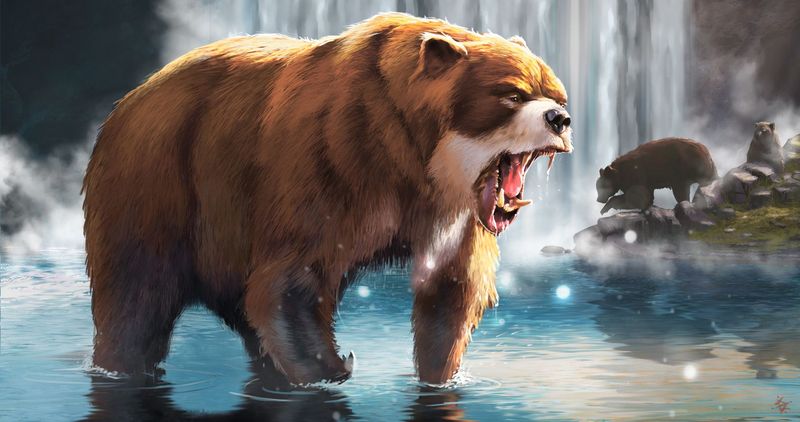
Known as the Short-faced Bear, Arctodus simus roamed North America during the Pleistocene. Its towering stature and elongated legs made it a formidable presence.
With a diet possibly consisting of both meat and plants, this bear exemplified adaptability. Fossil evidence reveals it could reach speeds comparable to a modern racehorse.
Such agility was crucial for hunting or scavenging meals. Yet, despite its prowess, the end of the last Ice Age spelled doom.
As large prey disappeared, so did this remarkable creature, leaving behind only skeletal reminders of its reign.
Agriotherium africanum
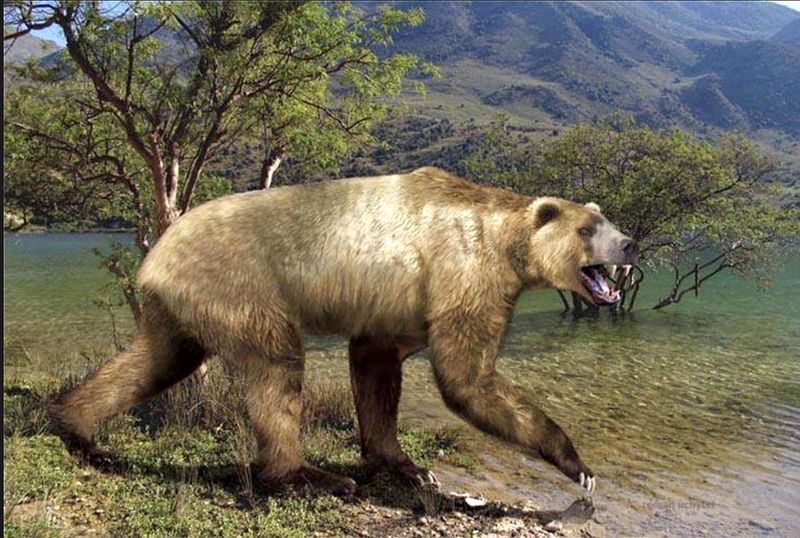
Agriotherium africanum, a bear species from the Miocene to the Pleistocene, inhabited regions spanning ancient Africa. Unlike its modern relatives, it possessed a more omnivorous diet, likely feeding on plants, insects, and smaller animals.
Its strong jaws and teeth, however, hinted at formidable hunting capabilities. Despite thriving in varied environments, climate shifts and habitat changes led to its extinction.
These factors, coupled with competition for food, ultimately pushed Agriotherium africanum into oblivion. Today, fossilized remains offer a glimpse into its once-dominant existence in the vast African wilderness.
Indarctos arctoides
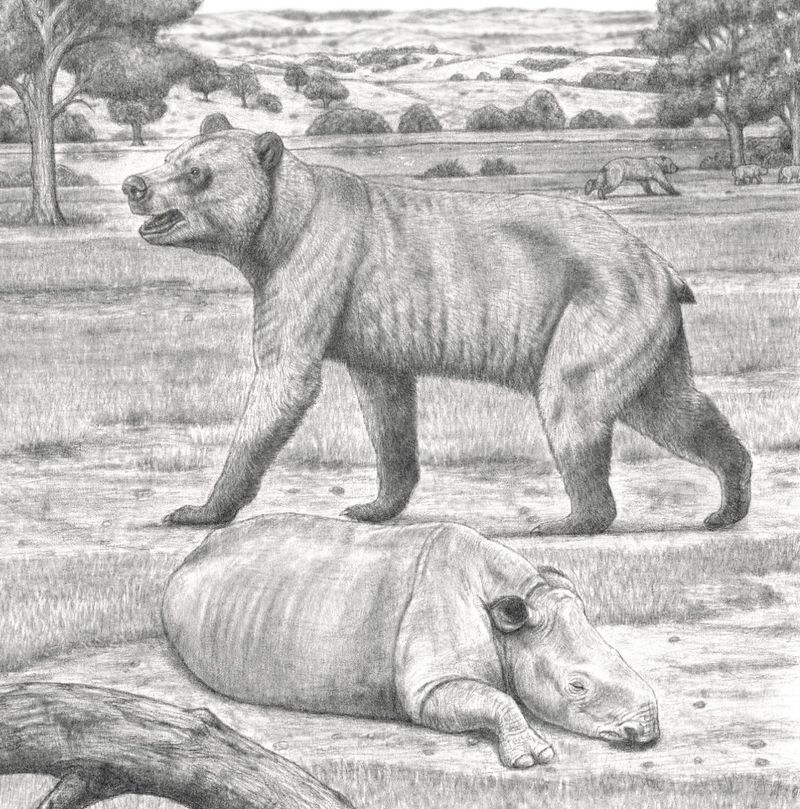
Indarctos arctoides belonged to a lineage that bridges ancient bears to their modern counterparts. Inhabiting Europe and Asia, its bear-like yet slightly canine appearance is intriguing.
Likely omnivorous, it adapted to various habitats. Fossils suggest it coexisted with other predators, facing fierce competition.
Over time, climatic changes and ecological pressures led to its decline. As forests shrank and food sources dwindled, Indarctos arctoides could not sustain its population.
This bear’s journey through time underscores the challenges faced by species in changing environments.
Ursus etruscus
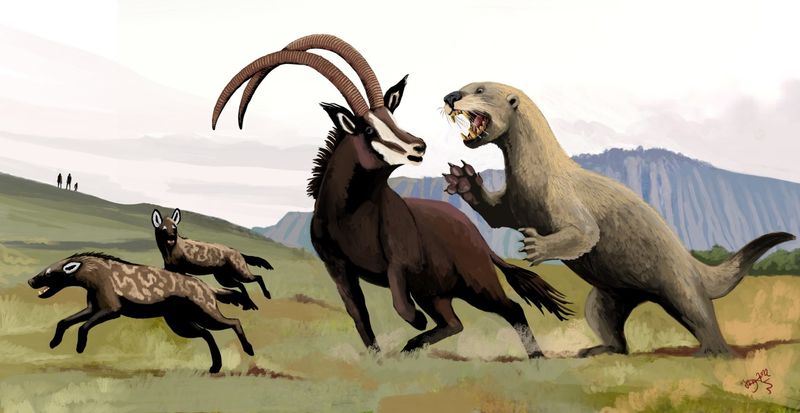
Ursus etruscus, a direct ancestor of the modern brown bear, once thrived in ancient Europe. Its habitat ranged over woodlands and open meadows, where it foraged for plants and small game.
The species’ adaptability contributed to its initial success. However, evolving climates and expanding competitors challenged its survival.
Over millennia, Ursus etruscus either evolved into more adaptable species or vanished. Its fossil remains tell a story of transition and how adaptation can dictate survival in the wild.
This bear’s legacy lives on in its evolutionary successors.
Tremarctos floridanus
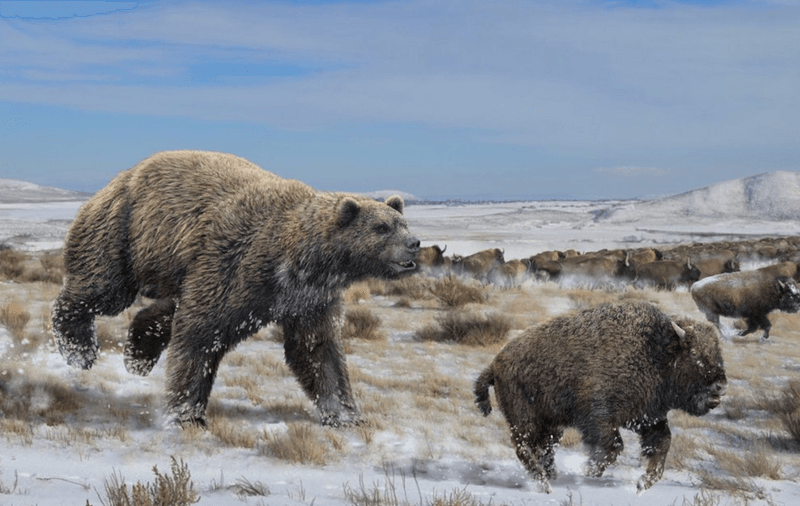
The Floridian Cave Bear, Tremarctos floridanus, once roamed the Southeastern United States. As a relative of the spectacled bear, its existence paints a picture of diverse bear species in prehistoric America.
With a diverse diet, it adapted well to its environment. However, as the Ice Age ended, many large animals, including this bear, faced extinction.
Climate shifts and human expansion played significant roles in its demise. Fossil discoveries in cave systems provide insights into its life and eventual extinction, offering glimpses of its once-thriving population.
Arctotherium angustidens
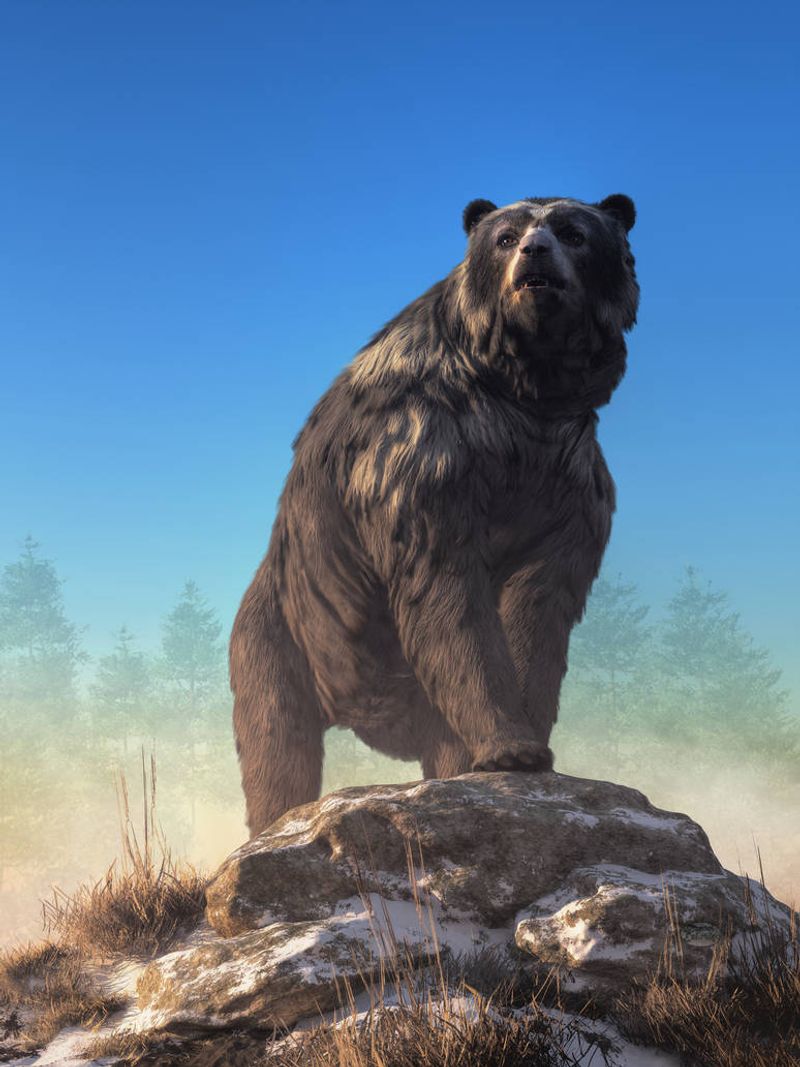
Arctotherium angustidens holds the title of one of the largest bear species ever. Roaming South America, its enormous build and strength made it a top predator.
The bear’s diet likely included large mammals, but it wasn’t limited to just meat. Plant material also featured in its diet.
As environmental conditions changed, its prey dwindled, leading to its extinction. Despite its formidable size, it couldn’t adapt quickly enough to the shifting ecosystem.
Fossils of this bear provide a fascinating glimpse into ancient South American wildlife and the challenges faced by large predators.
Ursus spelaeus
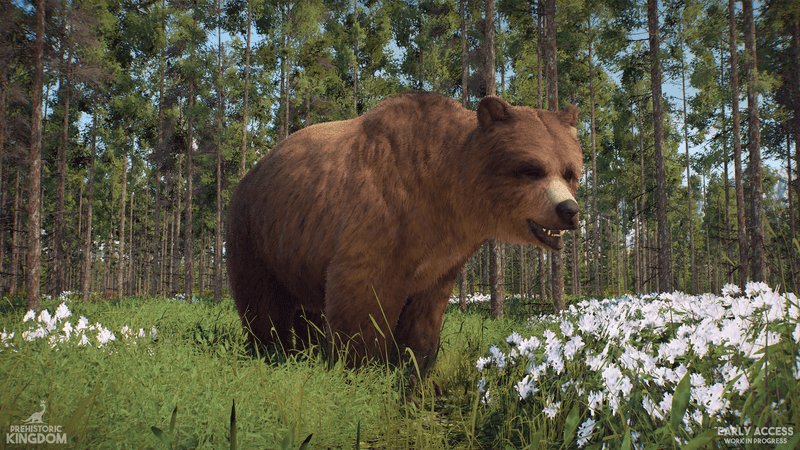
Ursus spelaeus, commonly known as the Cave Bear, once inhabited caves across Europe. Its remains often found alongside prehistoric human artifacts hint at a shared existence.
Feeding mainly on vegetation, this bear adapted to cold climates. As the Ice Age drew to a close, warming temperatures and human encroachment squeezed its habitat.
The resulting pressures proved too great, leading to its extinction. Cave paintings and fossils continue to captivate scientists and enthusiasts alike, providing clues to its lifestyle and interaction with early humans.
Ursus ingressus
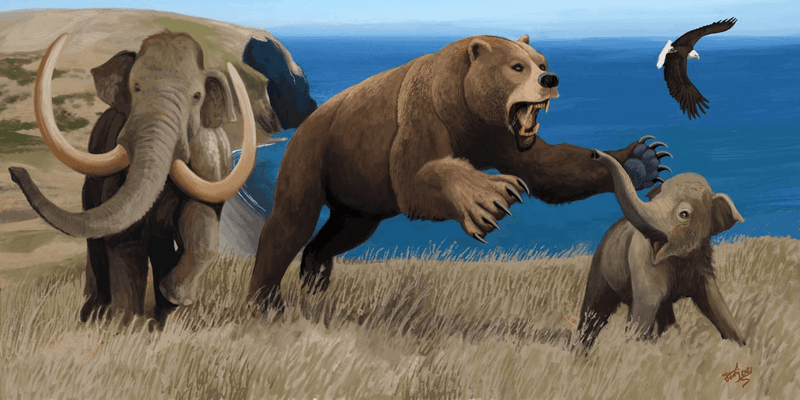
Ursus ingressus was closely related to the Cave Bear, inhabiting similar regions. Its robust frame and large molars suggest a predominantly herbivorous diet.
Adapted to cold, it thrived during the Pleistocene. However, as climates warmed and human populations expanded, its numbers dwindled.
Competition for resources intensified, exacerbating its decline. The bear’s fossils, often found in caves, offer insights into adaptation strategies that ultimately weren’t enough.
Despite its eventual extinction, Ursus ingressus remains a fascinating subject for paleontological study.
Ursus minimus
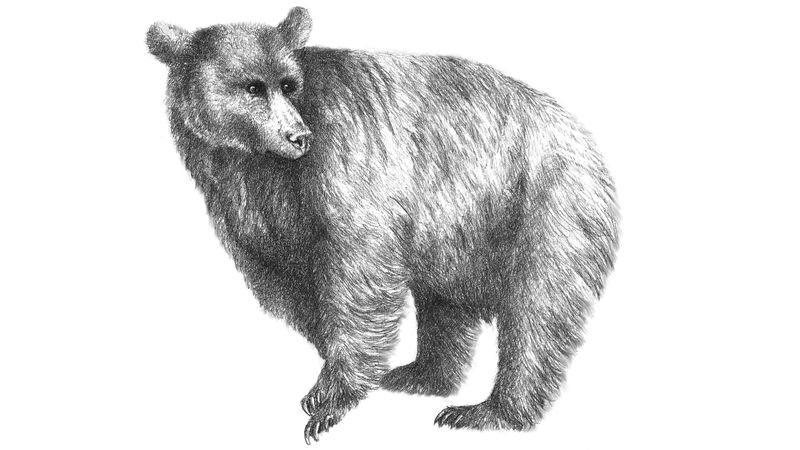
Ursus minimus, an early bear species, roamed Europe millions of years ago. Its small size distinguished it from later giants.
Likely feeding on a mix of plants and small animals, it navigated through dense forests with ease. Climate shifts and evolving predators, however, created challenging conditions.
Over time, this bear either evolved into larger species or succumbed to extinction pressures. Its fossils, although rare, provide valuable information on early bear evolution.
Studying Ursus minimus helps scientists understand the evolutionary paths that led to today’s bear species.
Ursus arctos californicus
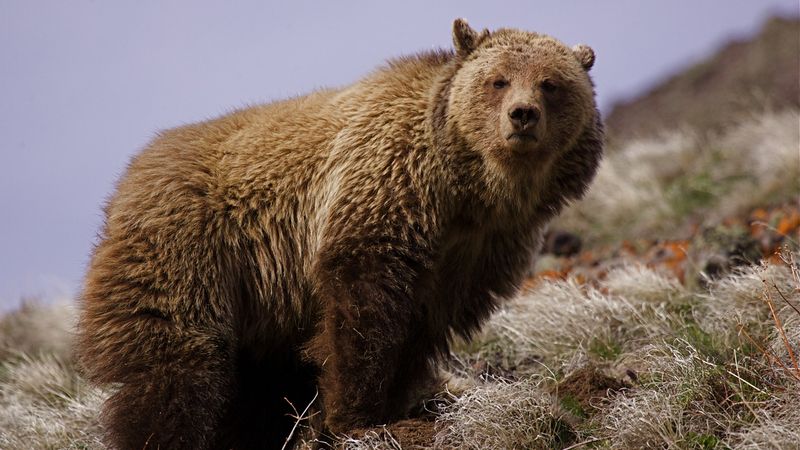
Once a symbol of California’s wilderness, the California Grizzly Bear, Ursus arctos californicus, was known for its size and strength. Thriving in diverse habitats, from coastal regions to mountain ranges, it fed on varied foods.
As European settlers arrived, conflicts grew. Habitat destruction and hunting decimated numbers swiftly.
By the early 20th century, this iconic bear was declared extinct. Today, it remains a powerful emblem in California’s history and culture.
The bear’s story is a poignant reminder of the impacts of human expansion on wildlife.
Ursus deningeri
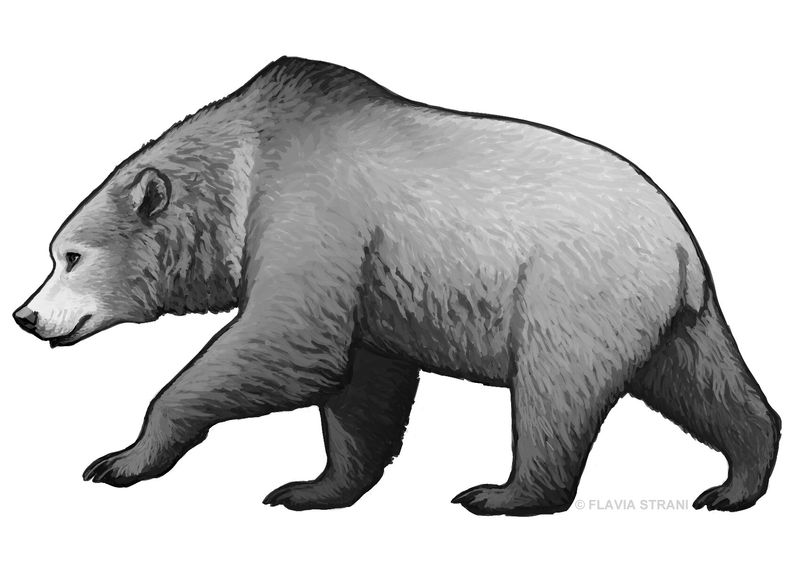
Ursus deningeri, a precursor to the cave bear, wandered Europe during the Pleistocene. Its evolutionary significance is notable, bridging the gap between earlier bears and the cave bear.
Adapted to colder climates, it likely foraged for diverse plant materials. As environmental conditions shifted, Ursus deningeri faced increased competition and habitat limitations.
These pressures eventually led to its decline. Fossils unearthed across Europe shed light on its existence and adaptation strategies.
The bear’s legacy continues in its evolutionary successors, highlighting the dynamic nature of species survival.
Spectacled Bear of the Andes (Tremarctos ornatus)
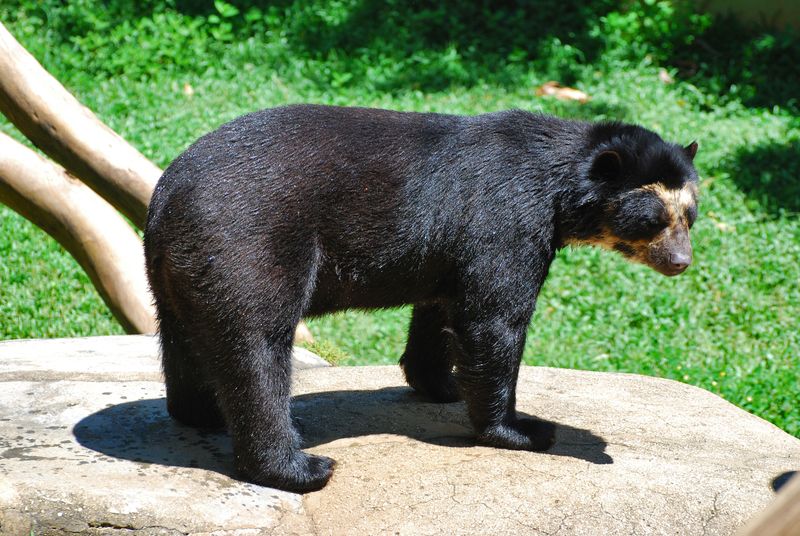
Tremarctos ornatus, commonly known as the Spectacled Bear, is the only bear species native to South America. Although not wholly extinct, its numbers have dwindled significantly, making it a focal point of conservation efforts.
This bear is easily recognizable by the distinctive white markings around its eyes, resembling spectacles. It inhabits the cloud forests of the Andes, relying on the dense vegetation for food and shelter.
The Spectacled Bear’s adaptability to mountainous terrains and varied diet, including fruits and small animals, underscores its resilience. Efforts to preserve its habitat are crucial, as it represents a vital link to the continent’s natural heritage.
Ursus abstrusus
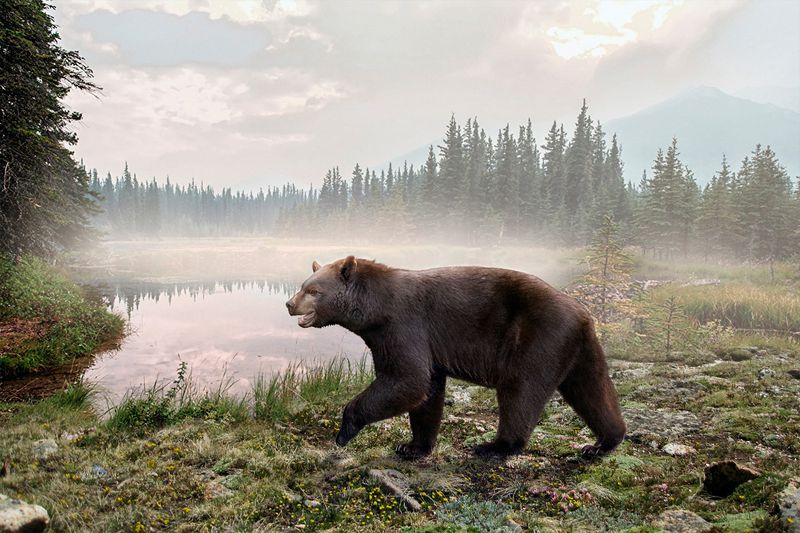
Ursus abstrusus wandered prehistoric landscapes, representing an early chapter in bear evolution. Its primitive characteristics set it apart from more advanced species.
Likely a generalist feeder, it adapted to available resources. Over time, changing environments and competition presented hurdles.
As other bear species evolved and thrived, Ursus abstrusus was left behind. Its extinction, while a loss, contributed to the broader evolutionary tapestry.
Fossils of Ursus abstrusus help scientists piece together the complex history of bears, showcasing both resilience and the inevitable march of time.
Hemicyon sansaniensis
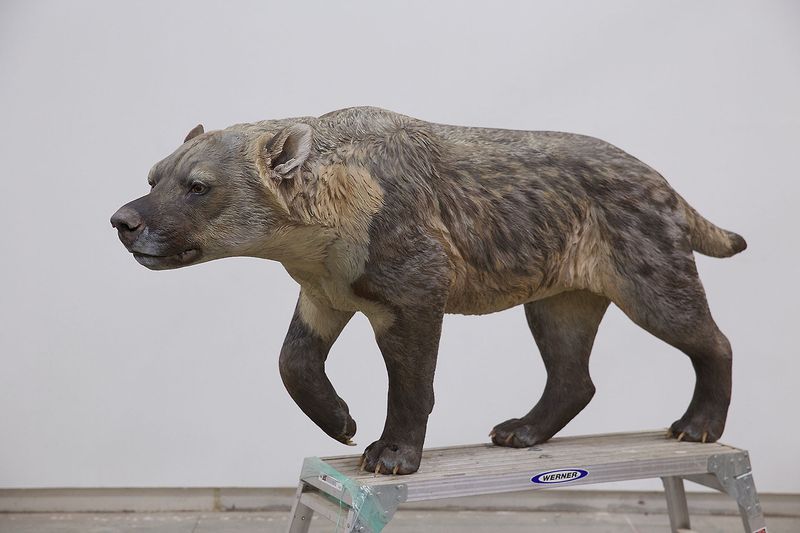
Hemicyon sansaniensis, often dubbed the “bear-dog,” lived during the Miocene epoch. Its anatomy uniquely blended features of both bears and canines.
This combination afforded it versatility in hunting and foraging. As ecosystems evolved, Hemicyon sansaniensis faced competition from emerging predators and shifting climates.
Despite its adaptability, these pressures led to its extinction. Fossil evidence provides a glimpse into the animal’s lifestyle and evolutionary significance.
The “bear-dog” serves as a fascinating example of evolutionary experimentation, highlighting nature’s creative adaptations in the face of changing environments.
Ursus praekudarensis
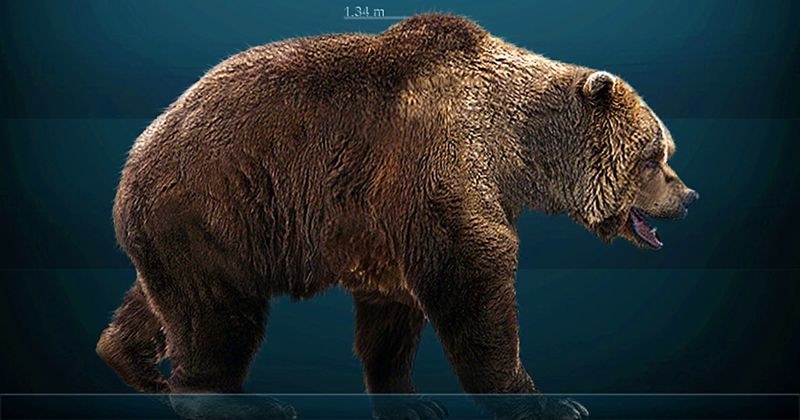
Ursus praekudarensis resided in Asia, showcasing features that bridge ancient and modern bears. Likely omnivorous, it adapted to varied habitats, utilizing resources effectively.
As climates transformed and competition heightened, survival became challenging. Over time, this bear either evolved into more familiar species or faced extinction.
Its fossils provide valuable insights into the evolution and migration patterns of early bears. By understanding Ursus praekudarensis, scientists gain a deeper appreciation for the evolutionary pressures that shape species survival and diversification.
This bear’s story is a testament to adaptation over millennia.
Arctodus pristinus
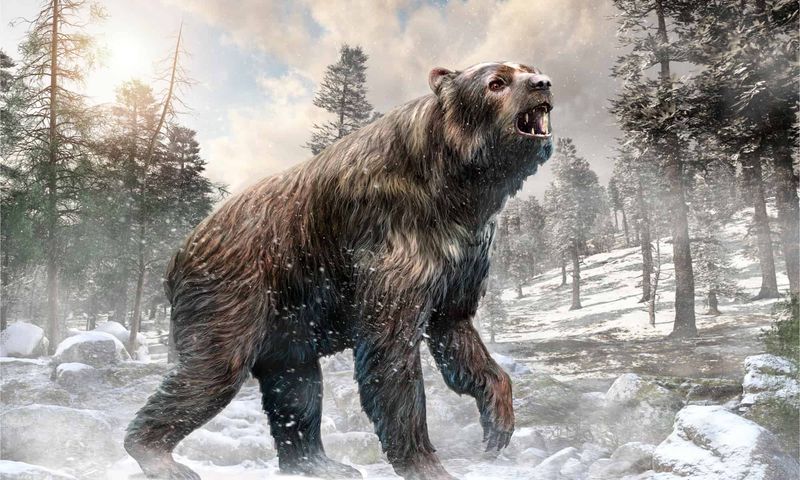
Arctodus pristinus, a relative of the larger Short-faced Bear, inhabited North America. Its lighter build suggested different ecological roles compared to its giant cousin.
Likely omnivorous, it exploited diverse food sources. Climate changes at the end of the Ice Age posed significant challenges.
As habitats transformed and competitors emerged, its numbers dwindled. Despite its extinction, Arctodus pristinus offers insights into the adaptive strategies of ancient bears.
Fossils reveal a story of evolution and eventual decline, underscoring the dynamic interplay between species and their environments over time.
Pachycrocuta brevirostris
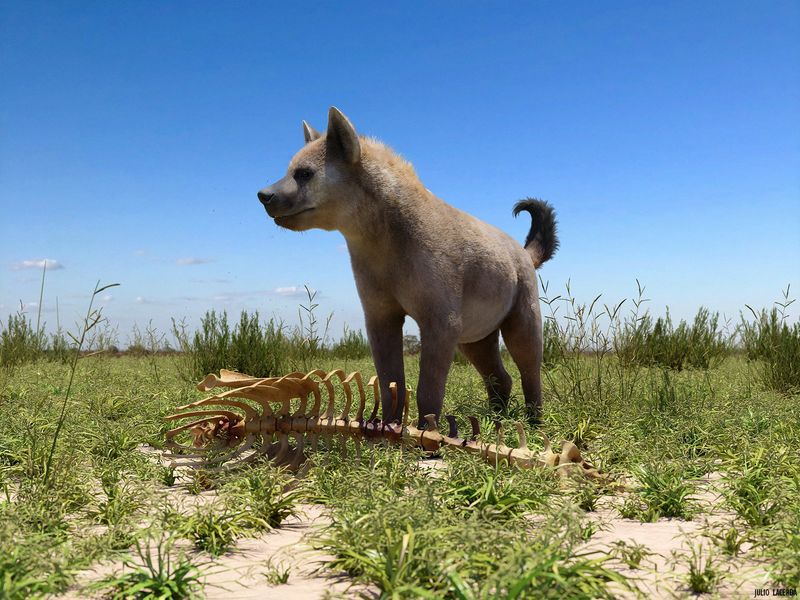
Though not a bear, Pachycrocuta brevirostris, the short-faced hyaena, often shared habitats with ancient bears, influencing their ecology. Its powerful build and scavenging behavior impacted predator-prey dynamics.
As ecosystems evolved, this hyaena-like animal faced increasing competition. Despite its formidable jaws, environmental shifts eventually led to its extinction.
The interplay between bear species and Pachycrocuta provides a broader understanding of Pleistocene ecosystems. Fossils help reconstruct the complex web of interactions that shaped ancient wildlife communities, highlighting the interconnectedness of species and their environmental contexts.
Ursus maritimus tyrannus
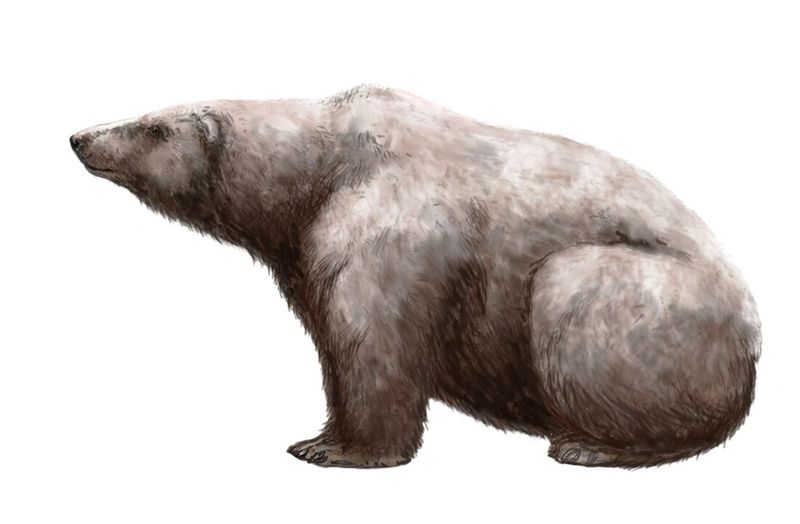
Ursus maritimus tyrannus, a giant prehistoric polar bear, once roamed cold northern regions. Its massive size suggests an adaptation to icy habitats, hunting seals and other marine life.
As the Pleistocene ended, drastic climate changes reshaped its environment. With diminishing ice and shifting prey, survival became untenable.
This ancestor of the modern polar bear highlights evolutionary responses to extreme climates. Fossil remains offer a glimpse into its life and the challenges of living in rapidly changing polar environments.
Ursus maritimus tyrannus serves as a testament to the power of environmental forces in shaping species.
Ursus haplodon
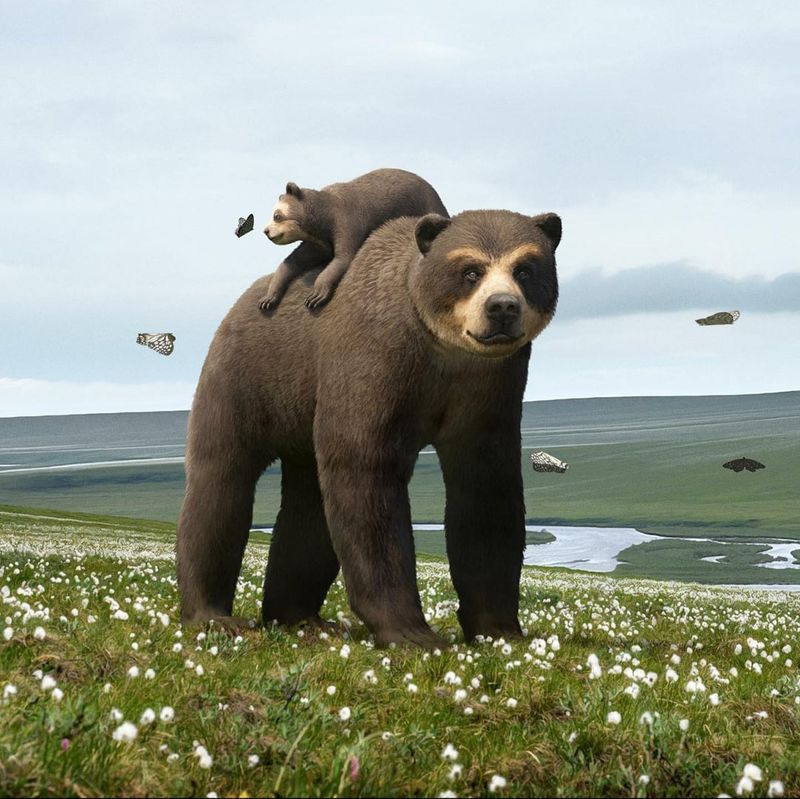
Ursus haplodon, a primitive bear species, inhabited regions during the Pliocene epoch. Its distinct features marked an early stage in bear evolution, characterized by a mix of primitive and more developed characteristics.
Likely omnivorous, it adapted to available resources, navigating changing landscapes. As climates shifted, the species faced mounting pressures from competitors and environmental changes.
Over time, Ursus haplodon either gave rise to more specialized species or succumbed to extinction. Fossils of this bear provide vital insights into early bear evolution, underscoring the dynamic nature of life’s evolutionary journey.
Plionarctos edensis
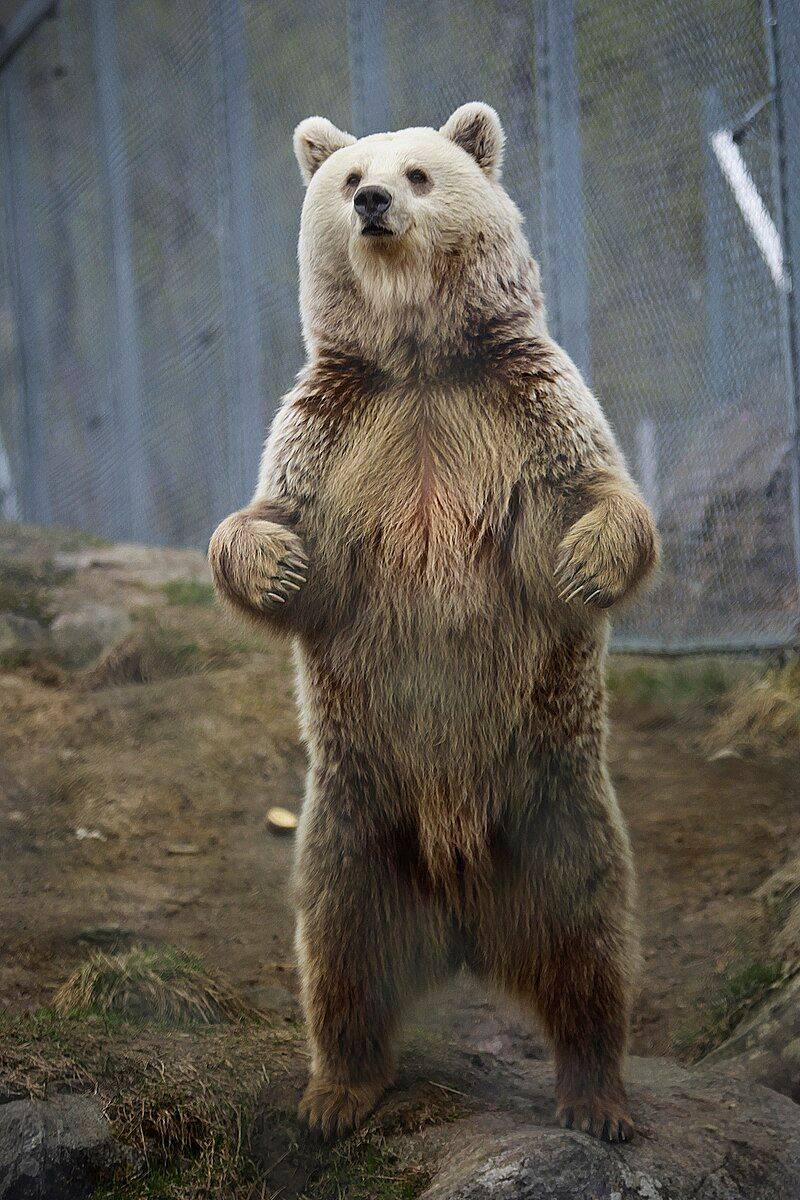
Plionarctos edensis is an ancient bear that lived during the Miocene epoch, roughly around 10 million years ago. This bear is considered a crucial link in the evolutionary chain, leading to modern bears.
Inhabiting the dense forests of North America, Plionarctos edensis thrived in an environment rich with vegetation, offering ample food resources. Their short, robust snouts and powerful limbs were well-suited to foraging and climbing, allowing them to exploit various food sources.
With a relatively small size compared to other prehistoric bears, Plionarctos edensis played a significant role in the ecosystems of their time.
